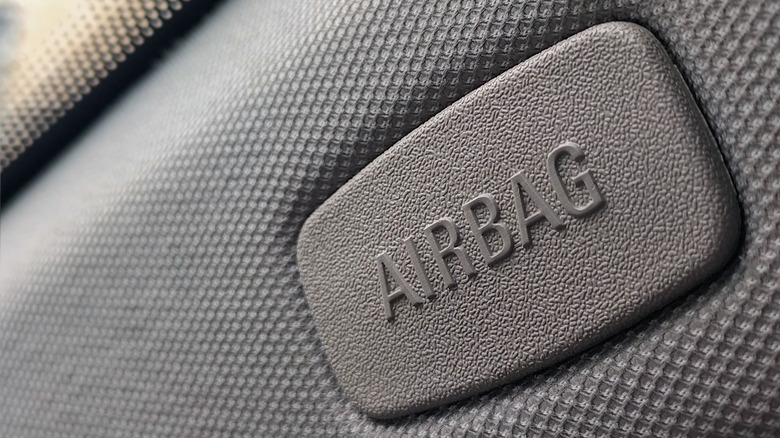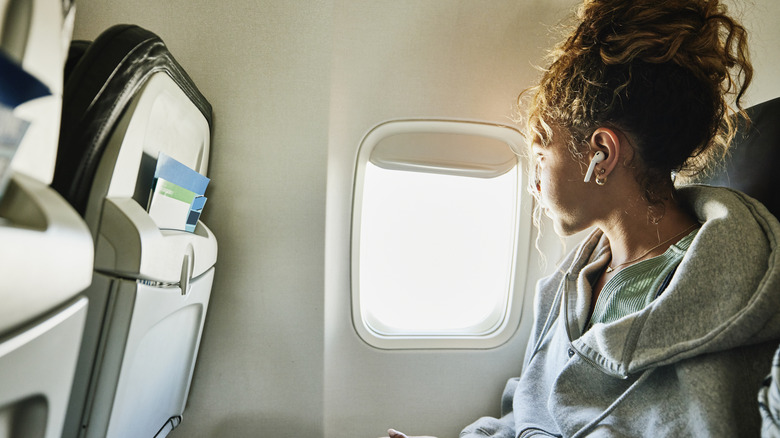Why Don't Airplanes Have Airbags On Board?
Way before seatbelts made their way into cars, they were already a safety feature in some aircraft. The first car to use seatbelts is still debatable since, although Volvo appears to be the first brand to equip a car with the feature in 1849, the lack of evidence to prove it raises validity concerns. Regardless, it's undeniable how seatbelts significantly changed the landscape of transportation safety. Another safety feature that has had the same impact (no pun intended) would be airbags.
Invented by Allen Breed in 1968, although it didnot debut as part of a passenger car until 1973, the airbag has also significantly improved transportation safety. According to the National Highway Traffic Safety Administration (NHTSA), between 1987 and 2017, over 50,000 lives were saved by frontal airbags alone from moderate to severe vehicular crashes.
Now, come to think of it, the way we position our bodies when riding a car is similar to how we sit inside the plane, at least in the case of commercial flights. Granted that the same opposing forces affect both vehicles – thrust, lift, drag, and weight – it's a bit of a mystery why only cars have airbags as a form of protection during accidents.
Also, considering that cars with the best safety ratings often come equipped with multiple airbags, providing at least one airbag per plane passenger seems not only reasonable but also essential. So why don't airplanes have airbags on board? The answer is complicated because, apparently, some airplanes do have airbags.
How come some airplanes are equipped with airbags?
Since the mid-1990s, cars have been mandated to have airbags as a standard safety feature. On the other hand, airplanes have not been generally required to have airbags. However, in 2010, a federal law began requiring some commercial planes to install this feature amid growing concerns over air travel safety. This prompted the adoption of seatbelt airbags. AmSafe Inc., the Phoenix-based company that makes the specialized belts, saw a growing global demand that year.
The seatbelt airbag is designed to inflate when its sensor detects a crash. It does not deploy during turbulence. It should be able to protect passengers from a crash that is 16 times the force of gravity, according to the rule, and that is similar to a head-on car collision at moderate speeds. However, not all seats are required to have it.
Only those with more room than the coach cabin are mandated to have airbags. Basically, the seats in the front, and those near the bulkheads and bathrooms, as well as the premium lie-flat seats and those in exit rows.
If you're wondering why you haven't seen these seatbelt airbags yet, the answer lies in the age of the planes we have today. Most of the aircraft used in both private and commercial flights are old, heavily used airplanes. The average age of U.S. airline jets is 11-15 years old. Since manufacturers only began adopting the feature in 2010, it would take time before we see more new planes with seatbelt airbags in circulation.

